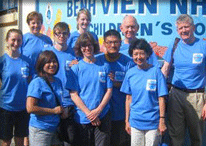

SUMMARY OF March 2015 service visits to Vietnam:
This was our official 9th mission in 8 years with 38 volunteers from various health care disciplines and representing many US medical institutions. IPSAC pediatric surgery, pediatric anesthesia, pediatric urology and pediatric oncology groups and the volunteers made their return service trips to 5 sites in Central and South Vietnam, Children's Hospital #1 and #2 and Pham Ngoc Thach medical school in Ho Chi Minh City, Danang Women and Children Hospital, and Kontum General Hospital in the central highlands to continue with prior program development activities.
New undertakings this year included exploring opportunities for capacity building at the 3 Children's hospitals in applied bioengineering toward developing innovative and economical engineering approaches in enhancing safety and efficacy of patient care; full immersion in clinical rotation of US Pediatric Surgery trainee for the first time to pediatric surgical care in VN hosted by CH#1; and Advanced Cardiac Life Support certification courses.
See the photos > > >
Work dates: Monday March 16 - Friday March 20, 2015
General Information:
This year, IPSAC activities have expanded to combined clinical, educational activities and research development.
In collaboration with our Vietnamese colleagues, the clinical team will continue our prior activities in providing joint patient care. IPSAC medical volunteers will have follow up of our past program projects at the various hospital sites. The sites are:
1. Children's Hospital #1, Ho Chi Minh City: Pediatric surgery capacity building with pediatric surgical exchanges and workshops. Children's Hospital #1 will host the first American Board of Surgery-approved pediatric surgery fellow clinical rotation in Vietnam.
2. Children's Hospital #2, Ho Chi Minh City: Pediatric Urology and Pediatric Oncology program development with clinical exchanges and workshops.
3. Danang Women's and Children's Hospital: Pediatric Urology, Pediatric Surgery Minimally Invasive operative techniques and Pediatric Anesthesia program development
4. Kon Tum General Hospital: Pediatric Surgery and Neonatology program development
In collaboration with the U of Illinois at Chicago and the U of Illinois College of Medicine in Peoria, the research team projects include:
1. Assessment of the hospital trauma system in major urban hospitals in Ho Chi Minh City- by representatives from the Emergency Medicine department
2. Applied engineering to provide low cost medical devices and equipment by representatives from the department of Bioengineering.
3. Assessment of quality enhancement opportunities of hospital practices through cardiac, trauma, pediatric and neonatal life resuscitation training courses.
Medical interpreters are especially welcome. Please contact us for further details about all administrative procedures:
[email protected]Dr. Tran Anh Quynh is a young pediatric surgeon staff with operative skills in minimally invasive surgical repair of neonatal anorectal malformations and diseases at
the National Hospital of Pediatrics in Hanoi. He was sponsored by
IPSAC to be selected as the 2014 recipient of the American Pediatric
Surgical Association APSA Travel Fellowship. He gave a podium
presentation to APSA membership on "Development of Pediatric Surgery
in Vietnam" at the May annual meeting. He was invited to attend the
Pediatric Colorectal course at Nationwide Children's Hospital and was
also the visiting surgeon at many US children's Hospitals, in
Peoria/Illinois, Nebraska/Omaha and Birmingham/Alabama. IPSAC
anticipates that through his 4 weeks experience in the US, Dr. Quynh
will take on a leadership role at his institution at National Hospital
of Pediatrics to transform the care of the children of Vietnam through improved research, clinical activities, and systems of care, and to
continue collaborative exchanges with
his newly established US
pediatric surgical partners.
Posted: April 02, 2014
As I sat on the long plane ride home, I reflected on my experience with IPSAC in Kontum. The first thing that comes to mind is our group's personality. As a former wilderness guide, I have first-hand experience with the importance of group dynamics on team productivity. Our team leaders provided a structured environment with clear role expectations for the members. This fostered team spirit, created a positive, supportive group environment and enhanced productivity. Every day, we would gather and share pictures from the day's work, hear of each of the groups (ex: NICU, OR, or nursing lectures) struggles and celebrate their successes. The group enthusiasm was contagious and created a positive feedback loop for a more supportive environment and excitement which allowed us to deal with most hardships of flight delays, hot working conditions, long hours, translation difficulties, ... and focus on what matters most- our patients and the hospital. We worked hard but we also laughed often! I loved our family style meals and walks to and from the hotel, where there was never a dull moment. We bonded over exotic foods, explored the markets, and even had a blast in the van while driving long distances.
In addition to group dynamics, I found myself drawing comparisons between this experience and other trips I've taken to low-resource countries. I lived in Guatemala for a year and volunteered in a hospital and clinic/pharmacy to help with translation and inventory. The department of Guatemala is well served by the popular jornadas, a temporary medical clinic, hospital, or health-related event. The jornadas in Solola are events which lasted a few days to a week where USA doctors provide general, pediatric, dental/oral, plastics, optometry, gynecology, and prosthetic limbs consultations and surgeries. Organizations that conduct these trips advertise through the radio and countless patients show up for treatment. In Kontum, educating the community of the difference between elective and emergent conditions helps ease the patients' fears about the true urgency of ailments which can be treated on an elective basis by IPSAC surgeons to relieve the volume burden on Kontum General Hospital's limited resources. While the highlands of Guatemala have been introduced to the tradition of marathon healthcare delivery by USA health care volunteers, IPSAC focus is different in its emphasis on partnership with local health care workers in enhancing the health care delivery through capacity building and education. Similar challenges exist between the health care needs of both countries such as basic education in nutrition, sanitation, and early disease recognition, the unmet health need of indigenous populations living in remote rural areas, the language barriers and the paucity of translators.
IPSAC is the first NGO allowed in the remote highlands of Kontum and has made incredible progress in capacity and relationship building in the first 2 visits. I am excited to see advances future trips will bring.

Thursday .....This is our last full day and it brought a lot of the weekly events together. First, all of the patients operated on this week are doing well when seen on morning rounds by the doctors. At the end of the day, this is the most important achievement and the families have all expressed their gratitude and satisfaction with their hospital experience. There are many parts to this mission trip but the core part is care of the children we operate on....and that has gone well. We are so grateful for this.
Allen and Nhi had a chance to spend some time discussing the operating room/anesthesia experience with Dr. Hien and Dr. Thien.....they went over what worked and what could be improved. Early plans for an anesthesia workshop are on the table....we'll see how we can make this a reality. Leon and Nerina translated and documented; truly invaluable skills!
Leanne and I have been teaching again! Two hours in the morning to over 50 staff (and again, nurses from hospital/clinics further out in the province). The morning session lecture topic was intussuception. Ms. Tung (nursing director) and Dr. Viet (thoracic surgeon/medical translator) were again present to assist us. By now, we all felt more comfortable with each other so I took the opportunity to be more interactive with the nurses....and they rose to the occasion! They are obviously well trained in the core courses of nursing education; anatomy, physiology, and assessment. They are so attentive and interested...a joy to teach and I learn a lot from them of how to adapt care in a situation with, at times, limited therapies. We also taught the Leadership group (Head Nurses) Heart/Breath sounds on the internet (www.easyauscultation.com for those of you interested!). IPSAC donated 12 stethoscopes to the Head Nurses and we spent some time learning to use them. Intellectually, these nurses understand the use of the stethoscope and assessment skills associated with it....however, they have limited practice as few stethoscopes exist in the hospital...mostly for the doctors. They practiced on each other and have a resource (online) to help them now...
Lindsay and Lan have outdone themselves in the NICU. Along with the NICU Head Nurse, they have changed practice in just a few days. Lindsay has brought environmental and feeding techniques to their unit. Most importantly, all the nurses (IPSAC and KT Hospital) have just spent time together with the babies and mothers.....they've problem solved, adapted, and built relationships.
Thursday evening, the KT staff hosted us at dinner at a local restaurant....Nerina was the first to notice that only 3 of the more than 20 people around the table spoke only English (she, Allen, and me....we vow to learn a few more words by next year!)..the rest are fluent in Vietnamese and English. What a eclectic group; different specialties, administrators, team support, and a couple of stray cats that Nerina/Nhi quietly fed under the table! Another amazing meal but the most amazing part is just the sharing of normal conversation by such a diverse group.
Friday.....
Our last day....we met as scheduled with the hospital leadership and each discipline gave its report...both from IPSAC and KT hospital. We made plans for March 2015 but agreed that with the continued use of Skype, we would "meet" every 1-2 months to prepare for the next trip. We learned a lot on this trip and individual projects take time to develop. We are all impatient but are reminded that small steps with ongoing evaluation/revision are important. Friendships have developed as we continue this effort.
Then the team, after checking out of the hotel, all climbed into our van....Vu (our driver extraordinaire) drove us back to Pleiku which seemed so much shorter in the daylight (our trip to Kon Tum was late at night!). Some team members flew to Saigon, some to Hanoi and Allen and I drove on to Buon Ma Thout to check out some other projects...and also to ride the elephants! There are private pictures to show if you are interested!
I had a great time and hope that all on the team felt the same way....words cannot really describe this week except to say that all the preparation and time are so worth this experience.
Nancy

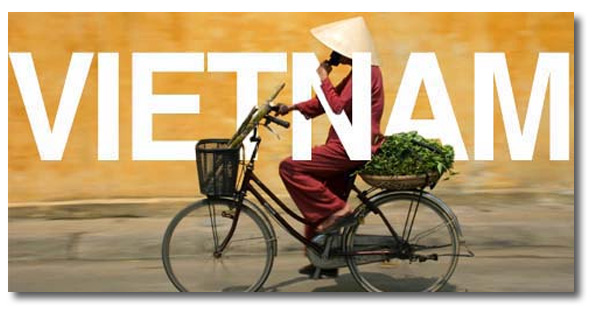



Posted: December 05, 2013
DOCUMENTS IPSAC NEEDS FROM ALL TRIP MEMBERS:
Please email the following to Nancy ([email protected])
1. Passport (electronic copy): the expiration date cannot be later than 6 months after entry for this trip which is September 14, 2014)
2. Your Curriculum Vitae (Resume)
3. A. Physicians, Nurses: Professional, active license
B. Medical students/Residents: please send a "letter of good standing" from your medical school or Chief of service. Let Nancy know if you need a template for the letter
C. Volunteers: Not applicable
4. International flight itinerary including airline flight numbers.
5. Emergency contact: name/address/email/phone/relation
6. Travel medical insurance information (if obtained)
7. Your contact info: address/email preferred/phone
8. Waiver: Please read, sign, and return attached IPSAC waiver form
VIETNAM VISA:
1. All Trip members must have a Vietnam Visa in addition to a valid Passport for entry into Vietnam
2. IPSAC will assist in obtaining a VN Visa prior to January 10th, 2014. Please see the separate instructions on what is needed for the visa and how to send the information to IPSAC's representative (Thao Huynh).
GENERAL POLICY STATEMENTS:
1. Please read the attached General Policy Statements from IPSAC. Please let Ai-Xuan or Nancy know if any questions.
OUR SITES:
1. Ho Chi Minh City:
Pham Ngoc Thach University of Medicine: workshops, curriculum development and research collaborations
Children's Hospital
#1: Continued capacity building for Pediatric surgery, Neonatal surgery, Pediatric Urology, Pediatric Hematology/Oncology.
Children's Hospital
#2: Pediatric Surgery, Pediatric Urology, Pediatric Hematology/Oncology. Discuss MOU for capacity building
2. Danang Women's and Children: Pediatric Urology and Pediatric Anesthesia capacity building
3. Kon Tum General Hospital: Pediatric surgery, Pediatric Anesthesia, Neonatology capacity building
Month of October, 2013
This mission was a panoramic sweep of the various forms of medical work and services existing in Vietnam, as well as those offered by IPSAC. Our time was divided between Ho Chi Minh City and Hanoi, and AFTER ADMINISTRATIVE CLEARANCE OF THE TEAM, it included visits HOSTED BY THE VIETNAMESE MEDICAL COLLEAGUES to public and private hospitals, workshops and meetings.
The first full day after we arrived in the country , we visited one of the public hospitals for an introductory meeting to determine how IPSAC could be of use to its pediatric patients. Various options are discussed, and afterward, we took a tour. When we entered the infant ICU, it took me a moment to re-orient myself. We were surrounded by children at a very fragile moment - the point at which they were struggling to move beyond the initial days or months of life, and the point at which parents, likely not too fat away, were hoping for a future outside the hospital's walls for their child. I didn't deserve this kind of access to such an intimate moment, but I was grateful for it, because it showed me how necessary a cause it is that drives the doctors and nurses that IPSAC supports.
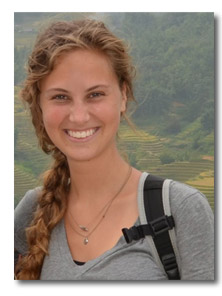 I came on this mission as a lay volunteer SERVING IN OFFICIAL CAPACITY AS SCRIBE FOR IPSAC TO THE MANY HOSPITALS - I do not work in the medical field, and because of my lack of familiarity with how the ins and outs of medical procedure in the US function, I went into each visit without expectations. Observing communications among the Holtermans, Dr. Vora, the other doctors with our team, and the physicians at each medical center was watching a mixed-genre production that was part diplomacy, part humanitarian effort, and part technical exchange.
I came on this mission as a lay volunteer SERVING IN OFFICIAL CAPACITY AS SCRIBE FOR IPSAC TO THE MANY HOSPITALS - I do not work in the medical field, and because of my lack of familiarity with how the ins and outs of medical procedure in the US function, I went into each visit without expectations. Observing communications among the Holtermans, Dr. Vora, the other doctors with our team, and the physicians at each medical center was watching a mixed-genre production that was part diplomacy, part humanitarian effort, and part technical exchange.
The approach of IPSAC towards those medical programs it assists, and others it hopes to assist, is that it does not promote its work as "assistance" at all. It is collaboration. This was what I most appreciated about the opportunity to to observe the work it does. Certainly, a nonprofit facilitated by American physicians such as IPSAC will often have access to resources that an underfunded, overcrowded hospital in one of the most populated cities in Southeast Asia does not, and in this way, IPSAC is "helping" by nature. But the attitude with which meetings are conducted, questions are asked, and projects are proposed is with a spirit of cross-cultural teamwork.
At a time when the US is bursting with nonprofits, not-for-profits NGOs, and so many people just thirsting to contribute to something good, IPSAC's work is an example of how to be a vehicle for good in a direct, professional, and culturally relevant way. Witnessing this, alongside a country-wide tour of Vietnam's best pediatric diplomats (read: smiling babies and children, both in and out of the hospital), made for a valuable shift in my awareness of international nonprofit work.
Month of September, 2013
The CH1 staff are Ms. Dang Le Anh Chau, Head Nurse of CH1 NICU and Ms Tran Thi Hong Huong, Management Nurse of CH1 NICU. They will be hosted by Dr. James Hocker, Head of the Neonatal Intensive Care Unit of the Children's Hospital of Illinois (CHOI)/OSF St Francis Medical Center in Peoria, Illinois and Clinical Nurse Educators Cheryl Cogan and Mickey Jones.
Their rotation to the US medical institutions occurs at the heel of previous visits by the CHOI NICU team to CH1. This arrangement is part of the MOU agreement between IPSAC and CH1 for building CH1 capacity and workforce. The exchange program is funded by OSF Foundation to carry on the Mission of The Sisters of the Third Order in furthering the benevolent, charitable, scientific program and educational activities of the medical center of St. Francis.
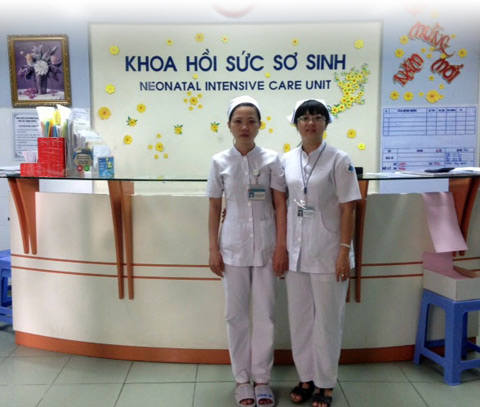
Sept 9-13, 2013
General Information:
Team briefing: Monday September 9 at Star City Hotel, Ho Chi Minh City
>> Kon Tum General Hospital team Tuesday Sept 10-Friday Sept 13, 2013:
Dr. Allen Browne, Pediatric surgery and team leader
Dr. Charles Zahalka, Pediatric anesthesia
Nancy Browne, Advanced Pediattic Surgery Nurse Practitioner
Leanne Hoang, Logistics coordinator
Damin Hoang, Volunteer and interpreter
Goals:
1. MOU signing
2. Pediatric surgery capacity building with patient care and education
>> Pham Ngoc Thach University of Medicine and Children's Hospital #1 in Ho Chi Minh City. Monday Sept 9-Tues Sept 10.
Dr. AiXuan Holterman, Pediatric surgeon, U of Illinois Center of Global Health and team leader
Dr. Tim Erickson, Emergency Medicine and U of Illinois Center of Global Health
Dr. Mark Holterman, Pediatric surgeon
Dr. Valerie Dobiecz, Emergency Medicine
Dr. Sareen Vora, Emergency Medicine
Maria McGlade, Volunteer, Social media
Nathan Holterman, Volunteer
Alex Holterman, Volunteer
Goal:
1. Program development in Pediatric Surgery, Emergency Medicine, Research collaborations
>> National Hospital of Pediatrics, Ha Noi, Vietnam. Wednesday Sept 11-Fri Sept 13
Dr. AiXuan Holterman, Pediatric surgeon, U of Illinois Center of Global Health and team leader
Dr. Tim Erickson, Emergency Medicine and U of Illinois Center of Global Health
Dr. Mark Holterman, Pediatric surgeon
Dr. Valerie Dobiecz, Emergency Medicine
Dr. Sareen Vora, Emergency Medicine
Goals:
1. Conduct Pediatric Advanced Life Support workshop jointly with NHP faculty
2. MOU signing
3. Program development: improving neonatal mortality, pediatric surgery training, research collaborations

Sept 9-13, 2013
General Information:
Team briefing: Monday September 9 at Star City Hotel, Ho Chi Minh City
>> Kon Tum General Hospital team Tuesday Sept 10-Friday Sept 13, 2013:
Dr. Allen Browne, Pediatric surgery and team leader
Dr. Charles Zahalka, Pediatric anesthesia
Nancy Browne, Advanced Pediattic Surgery Nurse Practitioner
Leanne Hoang, Logistics coordinator
Damin Hoang, Volunteer and interpreter
Goals:
1. MOU signing
2. Pediatric surgery capacity building with patient care and education
>> Pham Ngoc Thach University of Medicine and Children's Hospital #1 in Ho Chi Minh City. Monday Sept 9-Tues Sept 10.
Dr. AiXuan Holterman, Pediatric surgeon, U of Illinois Center of Global Health and team leader
Dr. Tim Erickson, Emergency Medicine and U of Illinois Center of Global Health
Dr. Mark Holterman, Pediatric surgeon
Dr. Valerie Dobiecz, Emergency Medicine
Dr. Sareen Vora, Emergency Medicine
Maria McGlade, Volunteer, Social media
Nathan Holterman, Volunteer
Alex Holterman, Volunteer
Goal:
1. Program development in Pediatric Surgery, Emergency Medicine, Research collaborations
>> National Hospital of Pediatrics, Ha Noi, Vietnam. Wednesday Sept 11-Fri Sept 13
Dr. AiXuan Holterman, Pediatric surgeon, U of Illinois Center of Global Health and team leader
Dr. Tim Erickson, Emergency Medicine and U of Illinois Center of Global Health
Dr. Mark Holterman, Pediatric surgeon
Dr. Valerie Dobiecz, Emergency Medicine
Dr. Sareen Vora, Emergency Medicine
Goals:
1. Conduct Pediatric Advanced Life Support workshop jointly with NHP faculty
2. MOU signing
3. Program development: improving neonatal mortality, pediatric surgery training, research collaborations

March 4-12, 2013
Children's Hospital #1 (CH1) in Ho Chi Minh City (HCMC): with IPSAC-VN Neonatology, Hematology-Oncology, Urology and General Pediatric Surgery faculty, led by Dr. M. Chen from the U of Alabama in Birmingham. We continued our collaborations to strengthen the respective clinical programs through departmental lectures, and as usual, a very full program of clinical and surgical exchanges on patients challenging clinical issues. We renewed our MOU with CH1 for an additional 5 years; activities to include continued exchange of faculty members and students; assistance to CH1 in furthering their research activities, educational programs, academic materials and clinical equipment; joint organization of public affairs programming, and continued Clinical Services and program building with emphasis on Neonatology, Pediatric Hematology, Urology and General Surgery.
DaNang Women's and Children's Hospital in Danang (DWCH): with IPSAC-VN pediatric anesthesia, urology and general surgery jointly led by Dr. D Vandersteen from the U of Minnesota and Dr. M Holterman from the U of Illinois College of Medicine in Peoria. In joint sessions with the faculty from CH1 of HCMC, we presented a two-day regional workshop on pediatric anesthetic care of the cardiac and neonatal patients, an update on pediatric general urology, innovative care in neonatal congenital diaphragmatic hernia and imperforate anus. We discussed the contents of our future MOU toward the goals to assist DWCH in program building for pediatric anesthesia, urology and general surgery. In anticipation of our team arrival, DWCH has prepared many surgical patients for joint evaluation and surgical care with CH1 and DWCH.
Kontum Provincial Hospital , Kon Tum: IPSAC-VN made its first site visit with a General Surgery and Pediatric Surgery team led by Dr. A Browne. We enjoyed the warm hospitality of the entire staff and made an assessment of the hospital and staff facilities. We discussed future areas of collaboration which include training and development of clinical services and programs in neonatology, pediatric surgery, pediatric urology, and breast care as well as nursing education. Dr. A Holterman presented an MOU between IPSAC and the hospital. Everyone agreed that the most important issue was patient care activities to address the issues of surgical burden for children of the VN highlands. Specific plans were made to obtain approval of the MOU, to continue communication via Facetime, and to send a clinical and educational team to the Kontum Provincial Hospital in September, 2013. The team also visited a number of highlander villages and Catholic Church Facilities in the province.
National Hospital of Pediatrics (NHP) in HaNoi: IPSAC-VN team consists of Pediatric Surgeons and Pediatric Surgery Nursing, led by Dr. A Holterman from UICOMP. We discussed many areas of potential collaboration, which include pediatric surgical training curriculum, research projects, advanced training for pediatric surgery, US exchange programs for NHP pediatric congenital heart team, and our assistance with the 2014 Asian Association for Pediatric Surgeons program. We spent an entire day giving lectures to the pediatric surgical housestaff and faculty. The topics included neonatal fluid resuscitation, emergency abdominal pain, neonatal intestinal obstruction, intestinal malrotation, abdominal wall defects, thoracic deformities and minimally invasive surgery with single site surgeries, NOTES.
It was for us another productive and enjoyable trip, renewing friendships with our Vietnamese colleagues, establishing new relationships and clinical collaborations and continuing our work to assist our friends in advancing the care of the children of Vietnam.

March 18th, 2013
We stayed in one of these resorts for a night and had the chance to wind down and relax after a week of "missioning." No schedules, itineraries, or shuttles. We spent half the day at the beach and the other half in Hoi An. Three of us, including myself, rented mopeds to make the 20-minute drive to the city from our resort. It was a tad nerve-racking, and I'm glad I did not drive the thing myself. I felt like a middle-aged woman on a Harley with her tattooed husband but hey, safety is all that matters.
That night we had a reception where we invited the medical staff the Da Nang team worked with, and we finished off the trip with a bang. It was great to be able to talk to everyone and share stories about our week. Our group mostly bragged about how our trip was hands down, no competition the best.
Warning:Serious Talk
I'm going to put it out there and be the wet blanket by saying that it was a challenge to get over the guilt of staying at the resort. From what we had just seen in the highlands, I kept on thinking about how fun it would be to steal one of the village kids and spoil them at the resort we were staying at. I heard many people in the team mention similar sentiments, and I was really touched. All the members of the team are used to this kind of luxury, and after only a week of seeing how certain people live in Vietnam, their perspectives had already changed. I think that this is the reason why we have so many veteran volunteers. Not because they feel good doing charity, but because they are true medical professionals through and through. When they see a need, they fix it, and they prioritize other people above themselves.
We hope to you will consider volunteering or "return tripping" for future IPSAC trips and thanks so much for reading.
Signing off for the last time at the Nam Hai Resort in Hoi An,
Isaac on behalf of the IPSAC team.
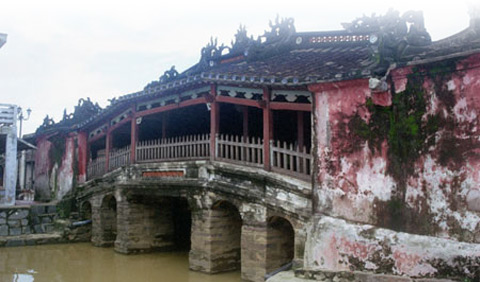
March 11th, 2013
Before we flew out of Pleiku, we made an impromptu stop at one last boarding house with the sole purpose of eating dinner. This meal got my vote for the best meal we had the entire trip. It was a five-course meal that included lotus stem salad, a chicken tofu porridge soup, spicy marinated squid, grilled fish with vegetables, and stir-fried beef lemongrass. Needless to say it was delicious. What really made it special was that we had never met them before that night, and they had spent hours preparing a meal that easily cost a small fortune for them. Over dinner, we learned that the students they took into their care were from the highland villages where education was not made available. If they wanted to have a future outside of the village they needed to attend the schools in Pleiku or Kon Tum. And that was what the nuns were providing for the boarders' parents: an inexpensive way for their children to be looked after, and also a way that they could secure a brighter future for their kids.
During the meal, the nun in charge asked me if I had a girlfriend. I sheepishly responded, "No, unfortunately." She countered by asking, "Do you want me to introduce you to some?"
Due to the beckoning of the other nuns and the traitors from my group, I allowed her to drag me to where all 150 of the student boarders were. I must have been lost in translation when it was mentioned during the dinner conversation that we were at an all girls boarding house. The nun discreetly ran off to get her camera and there I was alone.
There were so many girls.
They weren't the toddlers I was used to from the orphanages, but all in middle school and up. I was introduced to as many girls that had the courage or the English skills to hold a conversation. We played Badminton and I got a tour of the 4-story apartment building where they lived from 10+ tour guides. I won't bore you with too much detail, but when the rest of the dinner party came to "rescue me," Dr. Linh O'Connor intensified the frenzy. And yes I'm shamelessly dropping names. She mentioned to some of the younger girls I was an international pop star in the band One Direction. That's when the giggling and Facebook friend requests became more intense. Now that I had suddenly turned famous, girls came up to me with their camera phones and told me to hold still. 15 minutes later I left for the airport holding a spur of the moment gift in the form of a rose and blushing madly. I'm glad it was dark.
All in all it was a good day.
Signing off and wishing you were here at Pleiku Airport with us,
Isaac on behalf of the IPSAC team.

March 11th, 2013
On the way to the boarding house, I assumed it was an orphanage or a place where parents abandoned their special needs children because they couldn't actively provide for them. I was surprised when told that the majority of the boarders had families in the villages that came to visit when they could. For a small fee of one million dong or fifty dollars (with ample scholarships), the children received room, board, physical therapy, and education in crafts to be more self-sufficient.
The physical therapy helped many of the kids who were unable to support their head perform basic functions like sitting, crawling, walking, and making crafts to sell for the boardinghouse. When we arrived, the kids were in a craft room making silk flower arrangements, jewelry, and rosaries. Some of them couldn't even speak or sit up themselves but were able to make something to help raise money so their families could better afford them being there.
I put aside exactly forty stuffed animals before we left Saigon so each of the kids could get their own toy. One by one they raised their hand when they decided they were ready for one. Some of the boarders were teenagers but because all the kid's mental ages were about the same they all loved them.
The sister who ran the boardinghouse lead all the children in songs to entertain us and then proceeded to pick up different animals and ask the kids what noise that animal made. Our hearts melted. Even though it was apparent this was a routine activity, the kids were so excited to show off to their guests. We left the clinic with our pockets full of homemade bracelets and big smiles on our faces.
Tonight we are going to eat dinner with the sisters that run a boarding house for students in Downtown Pleiku. That means I'll be meeting over 150 kids ranging from age 5 to 18. I got my Jolly Ranchers ready for 'em and I'm predicting some intense badminton games.
Signing off and wishing you were here with us in Pleiku,
Isaac on behalf of the IPSAC team.
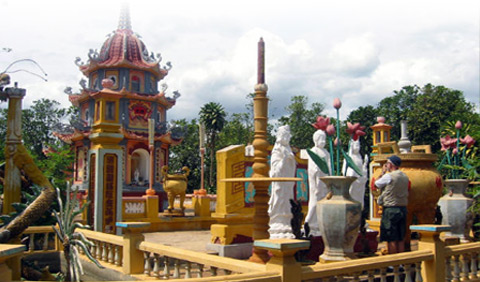
March 11th, 2013
As we visited the sites in the last two days, we realized the immense work done by the sisters to care for hundreds of these children. Their well beings also include healthcare needs but children in the central highlands are the ones that cannot afford the trip to a good hospital in Saigon, but must make due with the healthcare they can access locally which can even be unattainable for some of them. It was difficult to see so much need. I gave out toys, candy, and attempted to provide entertainment. I've never played peek-a-boo so much in my life.
The highlands that we visited are home to the Banar tribe who look very distinct from the Viet people. At first glance, they look like Latinos but are similar to Laotians or Cambodians. The Banar are not accustomed to many visitors, especially someone as American looking as Dr. Allen Browne (I tan fast so I was less of a neon sign) so they were very wide-eyed and curious. The children especially are very shy but like most kids, learn to trust someone after 10 minutes.
Seeing their faces light up when given a happy meal toy car, a bouncy ball, or a beanie baby became an addiction of mine. The biggest hit was a stuffed animal monkey whose rubber arms allowed it to be shot like a slingshot to distances up to ten meters. In my opinion, these children all have futures in the profession of smiling.
There are so many different kids who I talked with through a translator. The most memorable child I met was a ten-year-old girl that carried her baby sister from the village to the clinic, a five-hour journey on foot. When I asked her where her parents where she answered, "They are working." It was difficult to see children that young being forced to grow up that fast but the way she took care of her sister made plain that it was no imposition at all in her eyes. I don't know if it's because Dr. O'Connor is a general surgeon, but she went around picking up random children and entertaining adoption whenever she got particularly attached to one of the kids.
These last two days have been absolutely amazing. Abject poverty allows for so much sincerity. These kids, ranging from a few months old to eighteen years old, are so genuine. I'm getting a little sad now that we only have one more day in highlands. Hopefully our candy and toy supplies won't deplete before we visit the last sites of the trip.
Signing off and wishing you were here at the Sisters of Saint Paul Clinic with us,
Isaac on behalf of the IPSAC team.
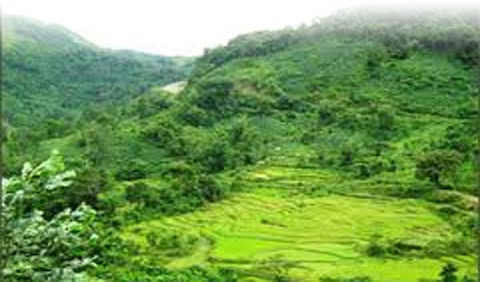
March 5th, 2013
Because my team wasn't involved with Nhi Dong 1, we snuck out after the welcome and were allowed to spend some time in the city before our 4 P.M flight.
Every trip to Saigon requires a few hours spent at the Ben Thanh market. This market is more or less a tricked out warehouse that houses aisles after aisles of stands selling all types of souvenirs and the latest brand name imitations. Unlike China, Vietnam has not perfected how to copy logos so double checking items of interest is crucial unless you want to leave the Ben Thanh Market with bags full of Ray Dan sunglasses, Cucci purses, or Abibas shoes. One of the best finds this year was a patriotic American hoodie that had written on it "Boston, Masachubatts."
Our team of six left for Pleiku with eight monster suitcases on top of our backpacks filled to capacity with blood pressure cuffs, sutures, medical textbooks, bags of candy and trail mix, and toys. These suitcases will all be empty in three days time.
When we got to Pleiku, another hour car ride to Kon Tum awaited us which is where we will be spending two days. Both cities are capitals of their provinces and are located in the highlands near the Laotian border. Vietnam is home to 55 ethnic groups with each speaking its own dialect. The Viet or Kinh people make up around 85% of the population. The poorest Vietnamese belong to these 54 ethnic minorities because they live in rural areas, isolated from Vietnam's economic boom. When I asked Dr. Ai-xuan Holterman for a direct quote to make this blog sound more official she said, "We've finally begun to reach out to the poorest of the poor who have no access to the healthcare system, and this is what we have always had in mind when we started IPSAC."
There's a lot we can do for the hospitals in Saigon and Da Nang, but hospitals and clinics in these poorer areas of Vietnam are in more desperate need. This trip is extremely exciting because we are establishing relations with the medical system in regions that have been untouched by NGO's like IPSAC. The next three days will be equally exciting and important for IPSAC's future work in Vietnam.
Signing off and wishing you were at the Indochine Hotel in Kon Tum with us,
Isaac on behalf of the IPSAC team.
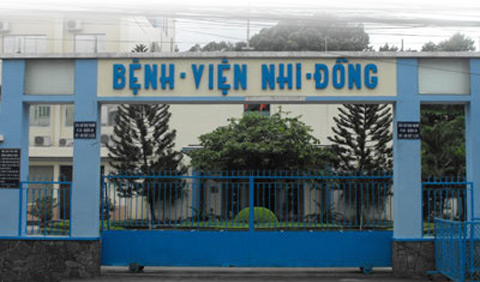
March 4th, 2013
When walking through Saigon during the day, the heat inhibits you from "touristing" effectively. You are focused on getting to the next shady stretch of sidewalk or finding a restaurant that has air conditioning. You gain a great amount of respect for the natives when you see the Vietnamese women sporting full body suits, not even breaking a sweat, to maintain a light complexion.
We reserved the first day, Sunday, for tourism. After breakfast at the hotel, we all split up into little groups to see the city. We do on average two trips a year and every time we visit Saigon, the city has further modernized in some way. The temporary Saigon skyline, still waiting for its up and coming skyscrapers, is littered with construction cranes. Some newly erected buildings now tower over the French colonial buildings that give Saigon its history and charm. The main modes of transport in Vietnam, scooters and bicycles, are slowly being replaced with cars. Laws have been passed that require helmets and traffic lights. It's less common to see the women wear traditional ao dai dresses, and even some kids are chubbying up with the newfound access to American fast food. Unfortunately, in subtle ways the natives are becoming more and more westernized. If you're thinking about volunteering be sure to sign up before the transformation is complete.
After a long day of seeing the city, the entire IPSAC team met for dinner. The logistics was so thorough this trip, I felt like I was on a school field trip. We were given name tags, which announced where we live, our position in the trip, cell phone numbers, and hotel addresses. Thanks to Nancy Browne we'll never have to worry about getting lost.
I'm guessin' the average age for the IPSAC team this trip dropped a good 15 years. A healthy amount of residents, fellows, and a medical student volunteered this year.
Our fates were decided for the week when we were divided into three separate groups. The team led by Mike Chen is staying in Saigon all week, Dr. Mark Holterman and Dr. Vanderstein's group is leaving for Da Nang, and Dr. Browne's group is leaving for the highland tribal villages via Pleiku. Da Nang is smack dab in the middle of country and Pleiku is between Da Nang and Saigon.
The Pleiku group members include:
Dr. Allen Browne
Dr. Ai-xuan Holterman
Dr. Linh O'Connor
Nancy Browne
Ai-thanh Le
And yours truly, Isaac.
We're breaking new ground by visiting hospital sites in rural Vietnam. This region is much less developed than the big cities, and consequently, is years behind in the level of health care that can be found in Saigon or Hanoi. Outside the province hospitals, many people receive care from outside clinics scattered throughout the region. These are the kind of patients we will be reaching out to.
The team objectives include
establish personal and professional relations with the Kon Tum district hospital
" collaborate with Kon Tum district hospital health care staff to bring rural patients into the system
In between hospital activities, we will be visiting parishes and centers where charity care is being provided to the poor people of the highlands.
I just finished filling three suitcases with 100+ blood pressure cuffs, 60+ beanie babies, and 40 pounds of candy and snacks for the kids. The nuns always take such good care of us when we visit that we wanted to thank them for their hospitality. Their requested, humble method of "payment" is bags of trail mix, Costco style.
Signing off and wishing you were here in Saigon with us,
Isaac on behalf of the IPSAC team.

March 3rd, 2013
For me, people watching is the best way to pass the time. It's especially fun to observe how people cope with the long flight. Westerners will put on their portable blackout curtain facemasks, remain buckled up, and try to sleep away the time. On the other hand, Asians unload their bags, and I'm not generalizing when I say this, ALL play Angry Birds on their iPads.
19 hours to Hong Kong, a 2-hour layover, then a 2 and half hour flight to Saigon (Ho Chi Minh City.) We arrived in Saigon at 12:30 A.M. local time, got to the hotel, and I got to writing.
Tomorrow is the team reunion at breakfast. There will be lots of strong Vietnamese coffee and pho (Vietnamese noodle soup) to wake us up. That means more to write about, and the focus will shift to our illustrious team members and the medical mission.
Signing off and wishing you were here at the Sofitel Saigon Plaza with us,
Isaac on behalf of the IPSAC team.
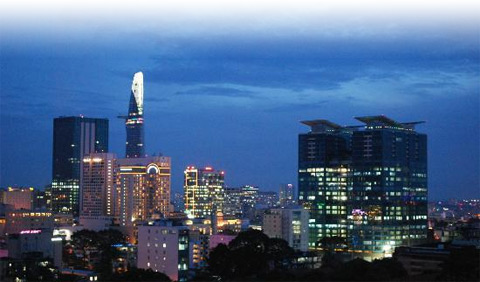
March 2nd, 2013
My name's Isaac Da Lat Holterman, and I am your designated online correspondent for IPSAC's eighth medical mission trip.
I am the third and youngest son of doctors Ai-xuan and Mark Holterman and by genetics am fifty percent Vietnamese. I could pretend that I am very culturally knowledgeable about my roots, but I've decided to be frank. All relationships should be founded on honesty, and I want y'all to know that I'm just an ethnic-looking American white boy who's just as giddy to be able to travel abroad as any 17-year-old Midwesterner would be. For instance, my Vietnamese is limited to food items on restaurant menus and the universal language of smiling.
This is my third and last trip to Vietnam before I head off to college, and because of IPSAC's steady expansion throughout Vietnam, I've been given the opportunity to explore new and distinct regions of the country. It's my job to share what I see and experience.
I have been given a lot of leeway in my blog to choose what I want to write about, and I have decided what task I will take on. The IPSAC trips are always a whirlwind of staff meetings, surgeries, lectures, visits to hospital wards, plane rides, shuttle buses and time to sleep, eat, and be a tourist jammed into the mix. Through living in a medical family, I've grown accustomed to how routine it is to get so caught up in the hustle and bustle of activity that the patients' story and families are given an understandable secondary importance.
During this trip, I will challenge myself to give a face to the Vietnamese children that benefit from the work that IPSAC does. Hopefully, if I articulate myself well enough, I'll be able to guilt trip you, the readers, into supporting us through volunteering, donations, and prayers. On top of writing, I'll be given a high tech camera (which will make my Asian tourist look complete) to take pictures of the hip happenings of the trip, the people I meet, and artsy tourist photos.
Signing off and wishing you were at O'Hare International Airport with us,
Isaac on behalf of the IPSAC team.

Posted: February 03rd, 2013